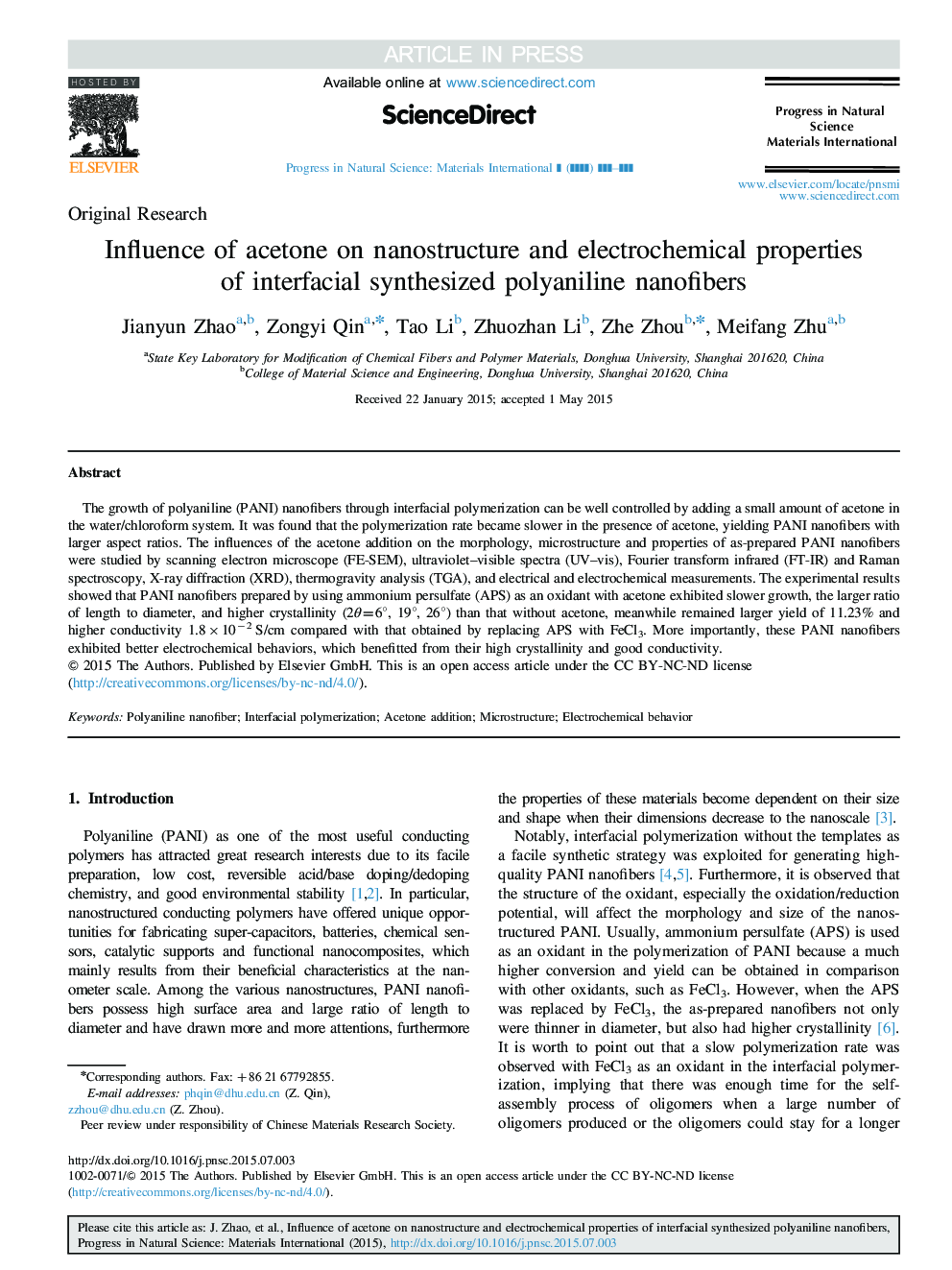| Article ID | Journal | Published Year | Pages | File Type |
|---|---|---|---|---|
| 1548062 | Progress in Natural Science: Materials International | 2015 | 7 Pages |
Abstract
The growth of polyaniline (PANI) nanofibers through interfacial polymerization can be well controlled by adding a small amount of acetone in the water/chloroform system. It was found that the polymerization rate became slower in the presence of acetone, yielding PANI nanofibers with larger aspect ratios. The influences of the acetone addition on the morphology, microstructure and properties of as-prepared PANI nanofibers were studied by scanning electron microscope (FE-SEM), ultraviolet-visible spectra (UV-vis), Fourier transform infrared (FT-IR) and Raman spectroscopy, X-ray diffraction (XRD), thermogravity analysis (TGA), and electrical and electrochemical measurements. The experimental results showed that PANI nanofibers prepared by using ammonium persulfate (APS) as an oxidant with acetone exhibited slower growth, the larger ratio of length to diameter, and higher crystallinity (2θ=6°, 19°, 26°) than that without acetone, meanwhile remained larger yield of 11.23% and higher conductivity 1.8Ã10â2 S/cm compared with that obtained by replacing APS with FeCl3. More importantly, these PANI nanofibers exhibited better electrochemical behaviors, which benefitted from their high crystallinity and good conductivity.
Related Topics
Physical Sciences and Engineering
Materials Science
Electronic, Optical and Magnetic Materials
Authors
Jianyun Zhao, Zongyi Qin, Tao Li, Zhuozhan Li, Zhe Zhou, Meifang Zhu,
